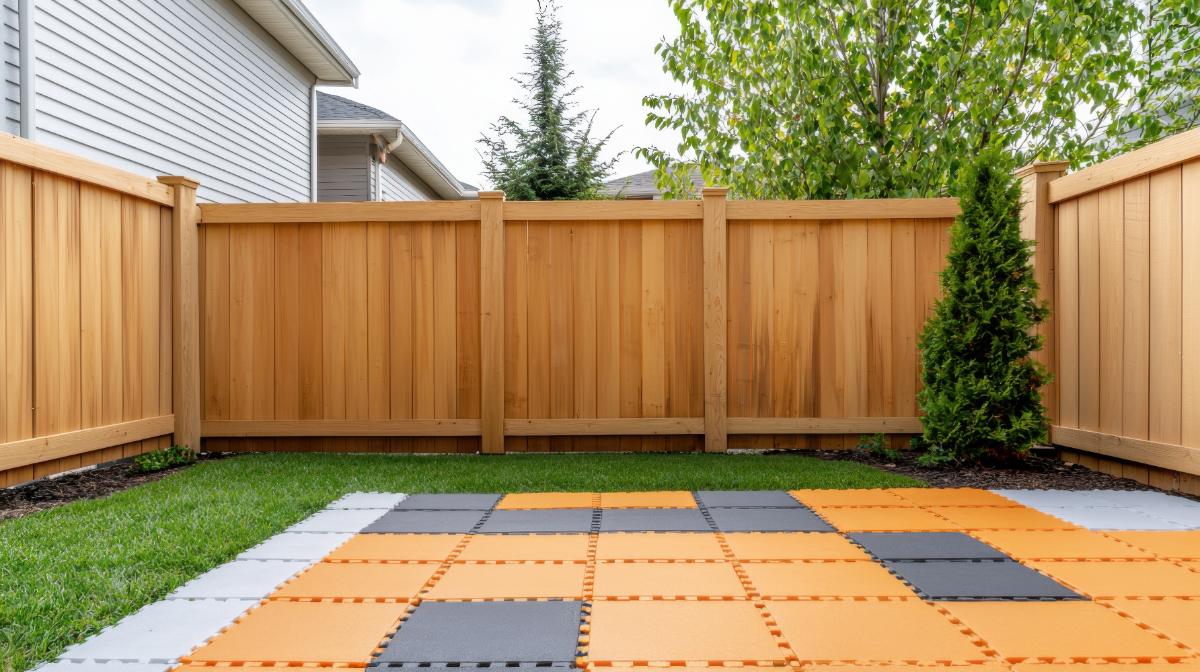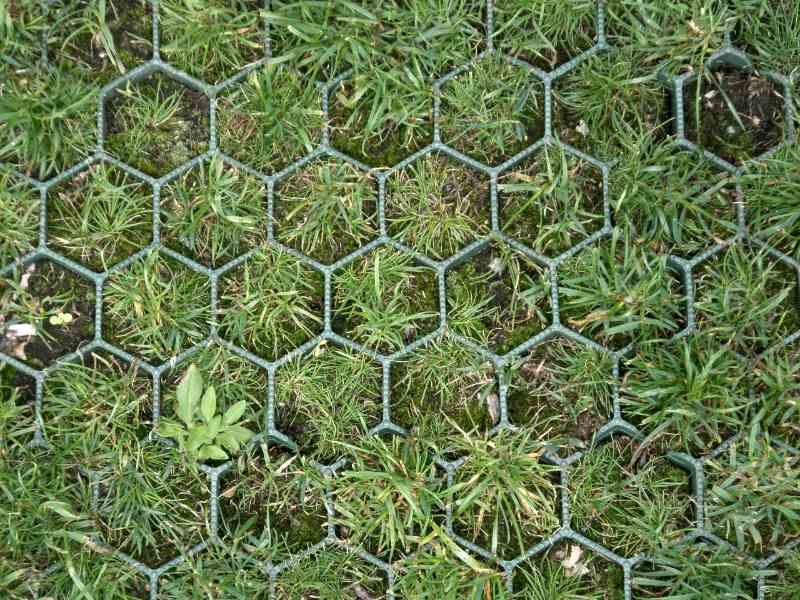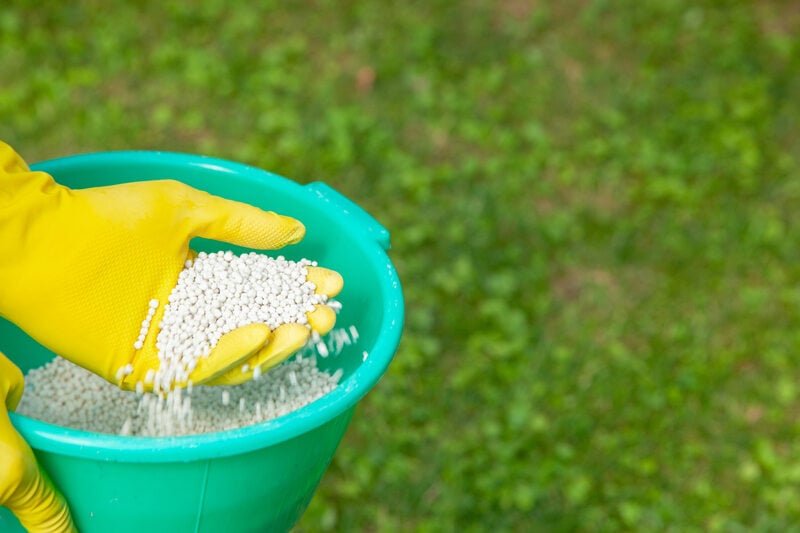
To protect your lawn during outdoor events, mow taller, avoid watering before the event, create pathways, and use temporary turf protections like plywood. You can also rake the grass to revive your lawn after the event.
To help you prepare before the event and take measures afterwards to help your grass recover, we’ll share tips and expert advice to ensure your lawn bounces back easily after your party or barbecue.
Before the Event: Prepare Your Lawn
Strengthen Your Lawn in Advance
Preparing your lawn for an outdoor event starts with maintaining a healthy turf that can easily recover from traffic. Take these measures to prepare your lawn for your guests:
- Mow taller within the mowing height range for your grass type: Longer grass blades create deeper roots and can recover more quickly from the foot traffic of an outdoor event. Remember never to cut more than 1/3 of your grass’s total height in one mow.
- Stop watering a week before the event: A dry lawn prevents muddy shoes for you and your guests, but there are also benefits to your lawn.
James Murphy, Extension specialist at Rutgers University, says, “A week or so before the event, withhold or greatly reduce irrigation to dry out the soil and lawn. The lawn and soil will be more tolerant of traffic from the event when conditions are dry.”
But he cautions that “dry” doesn’t mean “stressed.”
“Don’t allow so much drying that the turf is under severe drought stress,” he says. - Treat with fungicides a week before: Preventing disease means your lawn won’t have the added stress of disease pressure after your event.
“If rainy and hot weather is expected leading up to or during the event, it would be prudent to protect the lawn from diseases by applying fungicide a week prior to the event,” says Murphy.
Note: Also take this opportunity to protect your guests from pesky mosquitoes. Take a look at our guide on How to Get Rid of Mosquitoes in Your Yard or contact a mosquito lawn treatment pro to keep these uninvited guests out of your party.
| If you are in a hurry to prepare for your event, contact a LawnStarter lawn care pro to save you the time and hassle. Our customers spend an average of $48 for our lawn mowing services. |
Strategically Plan Space
Designate spaces that you plan to use and isolate vulnerable areas you want to protect:
- Create activity zones: Make use of the space by setting up different areas for each activity. That way, you’ll distribute the traffic better. If you’re hosting a barbecue, for example, spread tables and chairs on your outdoor patio so your guests can sit in a different area from where you are cooking.
- Protect vulnerable areas: If you have vulnerable areas that are supposed to remain untouched, such as a pollinator garden or cultivated veggies, protect the area by putting up a sign, plaque, or some type of fencing around it.
- Use lightweight furniture and decorations: Count on chairs and tables made of plastic or other lightweight materials to help prevent pressure spots on your lawn.
The same applies to your decor: Choose freestanding, lightweight decorations — items that you can hang on your trees or fencing and easily remove after your event (balloons, flags, string lights).
It’s also important to know that the unexpected might happen. Robert Polomski, Extension specialist at Clemson University, shared with us his recent experience hosting a wedding rehearsal dinner with 40 guests:
“I did my best to predict the movement patterns of the guests and to identify high traffic areas. I didn’t anticipate an impromptu wiffle ball game and then an ultimate frisbee match, but none of the guests wore spikes or cleats and the turf fared well.”
Consider Temporary Surface Protection

There are multiple options for temporary surfaces you can use to create walkways or set up your activity zones:
- Waterproof tarps
- Plastic pallets
- Old carpets
- Portable outdoor tiles
- Ground protection mats
Polomski says, “For areas where people will congregate and remain for periods of time, 3/4-inch thick sections of plywood distribute the weight of the guests and offer a degree of protection to the turfgrass crowns. Serious lawn owners could purchase geotextile fabrics or specialized interlocking flooring systems that protect the grass but allow for light and water penetration.”
But don’t leave lawn coverings on too long, especially in summer.
“These materials should not cover the lawn for more than a few days at most (the shorter the better),” Murphy says. “Lawns will tolerate covering when air and soil temperatures are cool; risk of severe damage from coverings is greatest when temperatures are hot and the covering is directly exposed to full sun.”
Note: For areas where you won’t lay a temporary surface, such as the spaces in between activity zones, you can spread organic mulch or stepping stones to protect the grass around them. Such materials will help distribute the weight and protect your soil from compaction.
Pro Tip: Is rain in the forecast? Temporary lawn protections can also be useful before the event.
“If you anticipate rain a day or two before the event, some of these high-traffic areas can be protected with a tarp, especially on slow-draining clay soils,” Polomski says.
During the Event: Take Active Measures
Set up Smart Stations
Try setting up activity areas throughout the yard so foot traffic is dispersed. Make separate stations for:
- Cooking food
- Eating food
- Dancing
- Sitting back and socializing
- Kids’ playground
Create Clear Traffic Patterns
By creating clear traffic patterns you can direct foot traffic away from the areas you intend to preserve. Lay down rocks, plywood, old carpets or ground protection mats to create temporary walkways that will help direct your guests and prevent them from walking all over your grass.
Manage Immediate Issues
If you’re planning on hosting multiple events, one followed by another, you can prevent pressure spots and compacted soil by rotating your setup. Change the location of your chairs and tables by moving them to areas you didn’t use before so the grass under these items can recover.
For alcoholic beverage spills, try to address them right away by rinsing the area with water to dilute the alcohol. If you can’t water that spot during the event, you can do it right after your guests leave.
After the Event: Recovery Care

Clean Up and Evaluate Your Lawn’s Condition
The first step is to clean up after the event. First, throw leftover veggies in your compost bin.
Next, “remove chairs, tables, and debris from the lawn to evaluate its condition. Thin or bare areas in high-traffic areas, puddling or ponding, runoff after irrigation, and shallow-rooted grasses are indications of compaction,” Polomski says.
He also recommends taking the opportunity to check for signs of lawn weeds.
“The reduced pore space, which impedes the movement of air, water, and nutrients to grass roots, favors these opportunists,” he says.
Address Soil Compaction
To relieve soil compaction, lightly rake the lawn after your party to lift up matted grass and relieve compaction. If you haven’t already, take this opportunity to aerate your lawn if you have warm-season grass (as late spring or early summer is the best time to aerate warm-season lawns). If you have cool-season grass, wait until the fall to aerate.
See Related:
Restore Damaged Areas
For damaged areas with bare spots, it might be time to overseed the lawn:
- Rake the area lightly to remove the dead grass and improve contact between the seed and the soil.
- Spread organic matter to improve the soil structure (compost or topsoil).
- Reseed small spots by hand or use a fertilizer spreader for larger areas to ensure even distribution.
- Water daily until you see the new seeds sprouting.
See our article on How to Care for New Grass for more information.
Fertilize

After you overseed your lawn, you can apply a starter fertilizer to improve the germination process and get your lawn back in shape quickly. If you don’t need to overseed, you can apply a regular slow-release nitrogen fertilizer to strengthen your turf.
Also, remember to fertilize at least once a year. Fertilizing your lawn is an important step to strengthen your grass, as it adds the necessary nitrogen and other nutrients required to keep your turf in good shape and capable of recovering from damage.
Water
Get back to your regular watering schedule (unless you overseeded, in which case you’ll need to water more frequently). The best time to water your lawn is between 5 a.m and 9 a.m. Aim to water your lawn with around 1 inch of water per week. You can do 2 weekly watering sessions of 30 minutes each using 1/2 inch of water, and you’re all set.
Pro Tip: If you’ve done everything above and your grass isn’t bouncing back, check your soil.
According to Polomski, “Healthy soil is the foundation for healthy plants. Have your soil tested to maintain an appropriate soil pH, fertilize according to soil test recommendations to apply only the nutrients that are needed, and feed your turf and the subterranean critters that support the grasses by returning the clippings back into the lawn.”
See Related:
FAQ
You can mow your lawn 1 to 2 days before the event. That way your lawn will be aesthetically pleasing to receive your guests.
Wait at least 2 weeks after laying new sod (or until the sod has rooted) before hosting an outdoor event.
Yes, there are certain types of grasses that are more resistant to traffic than others. The best grasses for high-traffic areas are:
• Perennial ryegrass
• Zoysiagrass
• Kentucky bluegrass
• Tall fescue
• Bermudagrass
When to Call a Pro
Whether you’d like help preparing your lawn for an event or repairing it after an outdoor party, you can count on one of our local lawn care pros. With LawnStarter you can have fun with your guests and loved ones without worrying about your grass — leave that part to us.
Sources:
James Murphy, Extension specialist at Rutgers University. Personal interview.
Robert (Bob) Polomski, associate Extension specialist at Clemson University. Personal interview.
Main Image Credit: Jayda_ArtistryHub / Adobe Stock